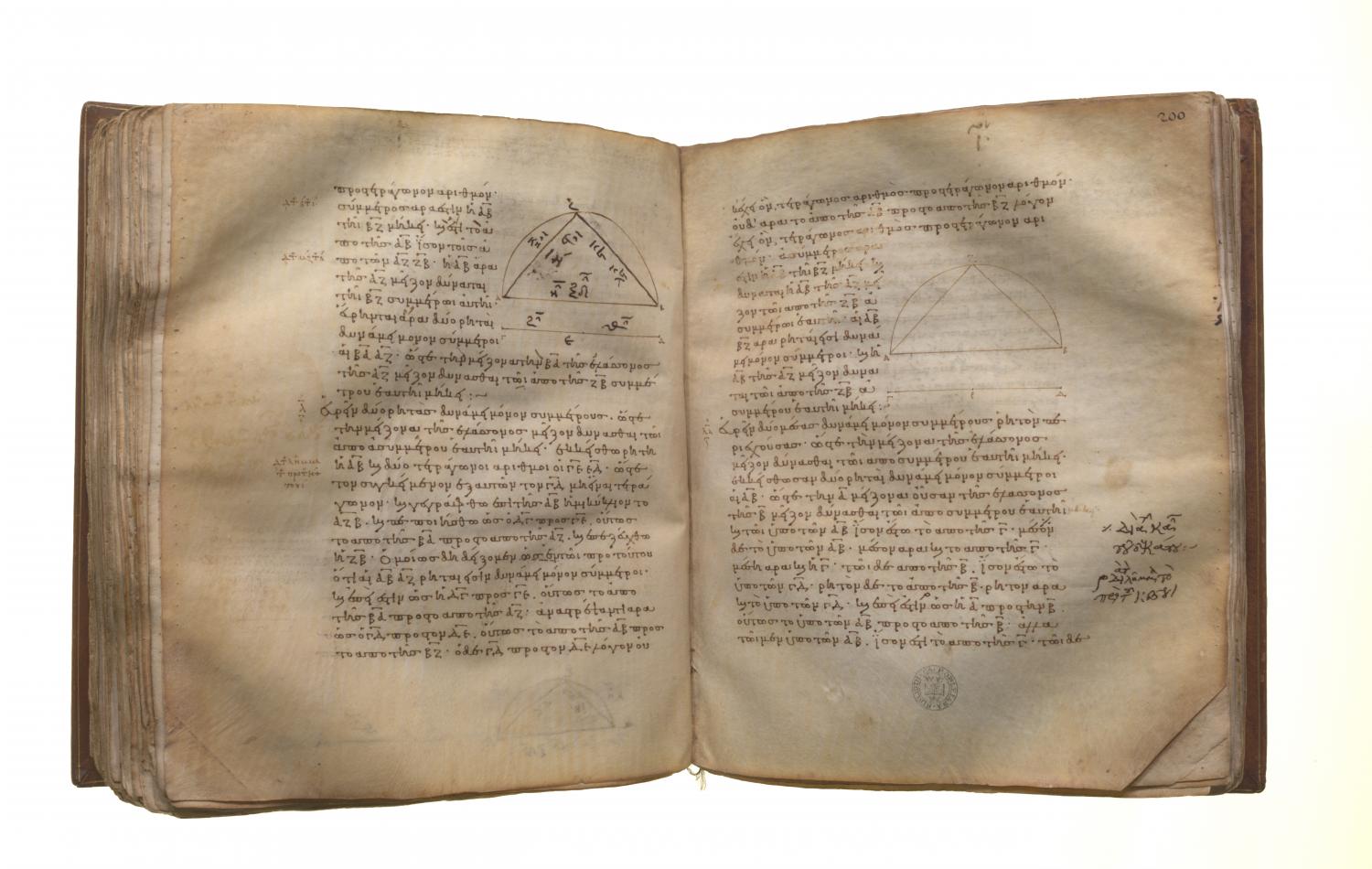Classification of incommensurables: Book 10 Proposition 31
Translations
To find two medial straight lines commensurable in square only, containing a rational rectangle, and such that the square on the greater is greater than the square on the less by the square on a straight line commensurable in length with the greater. Let there be set out two rational straight lines A, B commensurable in square only and such that the square on A, being the greater, is greater than the square on B the less by the square on a straight line commensurable in length with A. [X. 29] And let the square on C be equal to the rectangle A, B. Now the rectangle A, B is medial; [X. 21] therefore the square on C is also medial; therefore C is also medial. [X. 21] Let the rectangle C, D be equal to the square on B. Now the square on B is rational; therefore the rectangle C, D is also rational. And since, as A is to B, so is the rectangle A, B to the square on B, while the square on C is equal to the rectangle A, B, and the rectangle C, D is equal to the square on B, therefore, as A is to B, so is the square on C to the rectangle C, D. But, as the square on C is to the rectangle C, D, so is C to D; therefore also, as A is to B, so is C to D. But A is commensurable with B in square only; therefore C is also commensurable with D in square only. [X. 11] And C is medial; therefore D is also medial. [X. 23, addition] And since, as A is to B, so is C to D, and the square on A is greater than the square on B by the square on a straight line commensurable with A, therefore also the square on C is greater than the square on D by the square on a straight line commensurable with C. [X. 14] Therefore two medial straight lines C, D, commensurable in square only and containing a rational rectangle, have been found, and the square on C is greater than the square on D by the square on a straight line commensurable in length with C. Similarly also it can be proved that the square on C exceeds the square on D by the square on a straight line incommensurable with C, when the square on A is greater than the square on B by the square on a straight line incommensurable with A. [X. 30]

